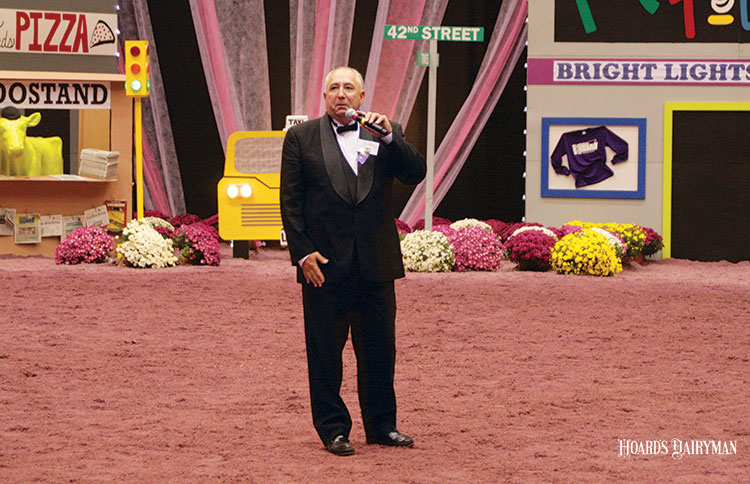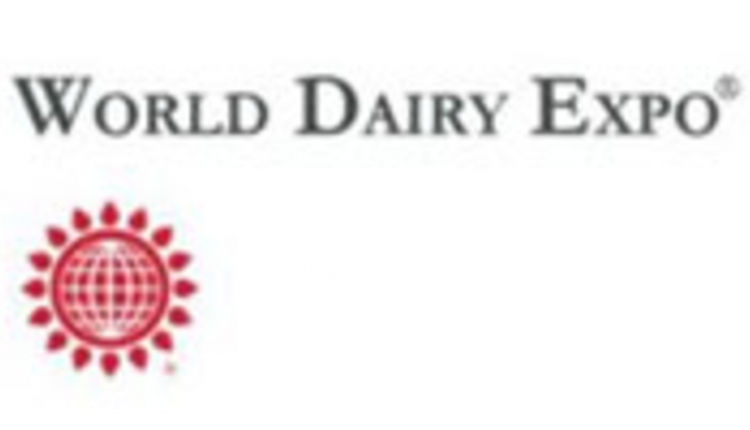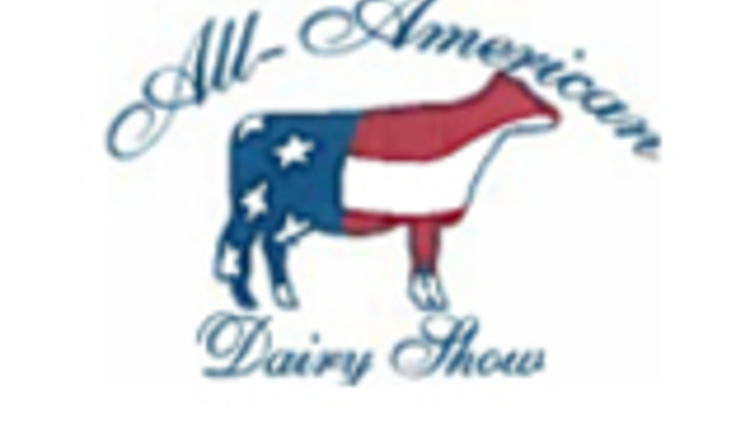
Bill Langel is the only superintendent the modern-day Red and White show at World Dairy Expo has ever known. When the late Terry Howard, overall Superintendent of World’s Dairy Expo’s Dairy Cattle Show, called with an invitation to lead the show, Langel did not take long to say, “Yes.”
“I would very much like to serve as the Red and White Superintendent,” Langel said of the request from the World Dairy Expo veteran, who had been there since its genesis.
“I have one follow-up question,” chimed Howard. “Why?”
“Because I have been an exhibitor there for several years, and I always wanted to do something to make the show better for exhibitors,” Langel recalled of the 1995 conversation.
“That’s why we want you!” confirmed Howard.
Langel was certainly familiar with World Dairy Expo. The Langel family, which hailed from Kirkersville, Ohio, owned a World Dairy Expo Grand Champion. The family bought Range Line Royal Pat, the cow that was named Ayrshire Grand Champion in 1968, which was the second year of the show in Madison, Wis.
“The closest thing we got to doing it ourselves was when Scotch Haven Lita Maretta was Reserve Grand Champion in 1979,” stated Langel of his father’s Nelson Langel & Son’s herd.
By that time, Langel was already a seasoned volunteer at the show. As an employee with the Holstein Friesian Association of America (now known as the Holstein Association USA), Langel had started selecting cattle for the National Intercollegiate Dairy Cattle Judging Contest that relocated to World Dairy Expo in 1977. “I did that for quite a number of years,” Langel went on to say about the contest that had been held in Columbus, Ohio, from 1967 to 1976, after originating in Waterloo, Iowa, in 1916.
In 1978, Langel moved to the greater Madison, Wis., area. After a number of years, Langel eventually left the Holstein Association. However, he missed working at the show, which had become like a second family to him.
“I felt kind of left out from World Dairy Expo. Years later, some of the show’s volunteers called and asked if I’d help with the commercial exhibits,” recalled Langel, who went on to lend expertise in that area. “But my heart always remained with the dairy cattle show. That’s why I responded with a rather quick ‘Yes’ a few years later when Terry Howard called me.”
Not the first time
When Langel began serving as superintendent for the International Red and White Show in 1995, it really was the second go around for the breed. “It wasn’t quite the first show,” stated Langel, “as the 1995 event happened to be the second time Red and Whites had been there. Harry Weir was in charge of the 1968 event,” he said of the main show for Red and Whites that largely was held at the Walworth County Fairgrounds in southern Wisconsin from 1968 to 1994.
“For those who weren’t around in the early days, the Red and White Show looked a lot different than it does today,” recalled Langel, who has become steeped in the breed’s history.
“In those days, we would have one or two really good cows on the top, most of the rest were just nice cows, and the bottom weren’t nice cows,” said Langel of his bird’s-eye view as superintendent on the Coliseum floor.
“The quality took a little while to get going,” he said, calling upon his earlier life experiences as a fieldman for the Holstein Friesian Association of America, which is now known as Holstein Association USA.
“There was an era that if you had a Red Holstein on the farm, you just got rid of them,” recalled Langel. It wasn’t until 1969 that the Holstein Association changed the rules to even allow entry of an animal into the herdbook if it had a red-and-white coat color.
“We were at the tail end of that,” noted Langel, as farmers hold strong to some traditions, and some of those notions were still alive in 1995 when the show rebooted at World Dairy Expo. “People, as a group of overall Holstein breeders, weren’t necessarily in love with them yet,” Langel shared.
A different opinion in Europe
That was the on this side of the Atlantic. Opinions varied across the pond.
“One time, I was over in Hungry unloading planes in Budapest,” said Langel, who spent 10 days unloading planes as part of his work with the Holstein Association. These were some of the early live cattle shipments to Europe.
“They took me out to some government farms,” he said of the country that was still run by a communist government in those days. “They loved having the Red and Whites because they all grew up with Fleckvieh and Simmental cattle. The folks in many of these European countries loved the fact they could get more milk with the Holsteins, and it didn’t change the color of the cows. So the Red and White cow fit in quite well.”
Eventually, the quality of the Red and White show started to take off.
“The first improvement took place when the Triple Threats started coming through . . . both his daughters and granddaughters,” said Langel of Hanover-Hill Triple Threat-Red, the highest priced Red and White to ever sell at public auction at that point in time. “Triple Threat added a strong dose of type,” said Langel. “Then Glenafton Enhancer, a red carrier bull, added a dose of milk.
“I was there when Doug Dodds bought Triple Threat at the Hanover Hill Sale. He was just a little bull calf,” recalled Langel, who was puzzled on that day of the purchase. “I had known Doug all my life through the Ayrshire breed, and I thought to myself, ‘Why in the world is he paying that kind of money for just a little red bull calf?’”
Dodds bid $60,000 at that 1972 sale and made the purchase for American Breeders Service (ABS). “Doug made a very smart decision that day,” Langel said.
“Of course, when Apple hit, then the show really jumped in quality,” he continued. Apple, of course, became a one word namebrand for a cow just like Elvis, Madonna, or Garth are to the music world. Apple was none other than KHW Regiment Apple-Red-ET.
A monumental day
One of the unique moments in World Dairy Expo lore took place in 2013, when three cows from the Apple family earned top honors in the show.
“I was blown away that day,” said Langel, who was standing on the colored shavings during the show as the Red and White superintendent. “That was the biggest moment I had ever witnessed at World Dairy Expo when that family all showed up there that day.
“Being a cattle breeder, not just a cattle exhibitor, to actually see a cow family do something like that to me was just a miracle!” said Langel. “Remember, those three cows were all shown by different people,” he said of KHW Regiment Apple-Red-ET, selected as Reserve Grand Champion behind her clone, KHW Regiment Apple 3-Red-ETN, who earned Grand Champion. Ms. Candy Apple-Red-ET, Apple’s daughter, was named Honorable Mention Grand Champion.
Michael Heath, the judge that day, proclaimed, “Bing, bang, boom!” as he selected the terrific trio at the show now rebranded as the International Red and White Show. Apple 3-Red went on to become Reserve Supreme Champion at the close of the show.
More than one exhibitor
“Remember, it wasn’t just one guy getting them all ready. It’s hard enough breeding cows and getting a good one. It’s a lot harder getting that good one to the show,” said Langel. “Consider if the cow doesn’t breed back at the right time or if she gets a light quarter. So many things can happen. To get all those animals there at one time is a miracle.”
Another Red and White pinnacle had taken place a few years earlier in 2005, when Lavender Ruby Redrose-Red was named Supreme Champion of the entire show.
“I knew Mark Rueth ever since he was a kid in Jefferson County,” he said of the Wisconsin dairy farmer who both bred and owned Redrose. “I was so happy for him. That was a wonderful cow. She absolutely deserved that Supreme. Knowing where we (Red and Whites) came from . . . that was truly a special day.
“Again, there is a cow that bred true. Look at all the offspring from her,” Langel noted.
Supers do super
As for his fellow breed superintendents, “I got along with all of them. I thought they did super jobs,” said Langel. “They absolutely love Expo and would do anything to make it go. You need people like that to make something work.”
Langel was there, too, when the show transitioned from the old barns to the new pavilions.
“The barns were well beyond repair. It was not a good situation from a health standpoint and actually taking care of animals. I remember one year the water didn’t even work in the Ayrshire barn, and we had to string hoses from the Canadian barn just so we had water.
“Situations like that were one of the things that really made me want to be a superintendent. I wanted to try to make life better for exhibitors,” said Langel, who admitted there is still more work to do.
“When we got the new pavilions, that’s when we finally got a first-class facility. I just wish we could have added three of them,” he said, noting cattle still spill over to two tents.
Why is Langel calling it a career?
“A couple of things. The hardest part of my job is stalling. It’s the hardest job for all the superintendents. We still don’t really have enough room for what’s going on at the show,” he said.
“In 2019, I just couldn’t make things work,” he said of his last year stalling cattle at the show. “I tried to take care of people the best I could, and it didn’t happen. It is really hard to fit everyone in with all the tents and clipping stalls.
“Ken Elliott was a master at it,” said Langel. “He knows everybody from coast to coast.
“In fact, I recommended to Dave Bollig, the overall Dairy Cattle Superintendent, that the Holstein superintendent should take the lead on the Red and White stalling because there are very few exclusively Red and White herds anymore,” he said of his advice to those running future shows.
“I always told Kenny, ‘You ever quit this job, I’m quitting with you,’” said Langel, who has deep admiration for his fellow Holstein superintendent. (To learn more about that story, read, “He’s the engine that put the Holstein show into motion.”)
“When it came around that Ken was going to leave, I said to myself, ‘This is the perfect time for me to exit with COVID-19 and all. They need new blood in here.’
“I am going to help in the transition, but they need young people in here,” he explained.
What will Langel miss the most?
It’s like a family
“The camaraderie with my other superintendents. They are great people. They give their hearts to World Dairy Expo, just like all the other volunteers. I am also going to miss the rapport with the breeders and their families. They invest so much love, time, and money into presenting their animals in the best way possible.”










